Following on from last week’s posts about my Dunedin Brick Show display (read here) and the lower levels of the Caaaaaaves! build (read here), here are the closeups of the upper levels.
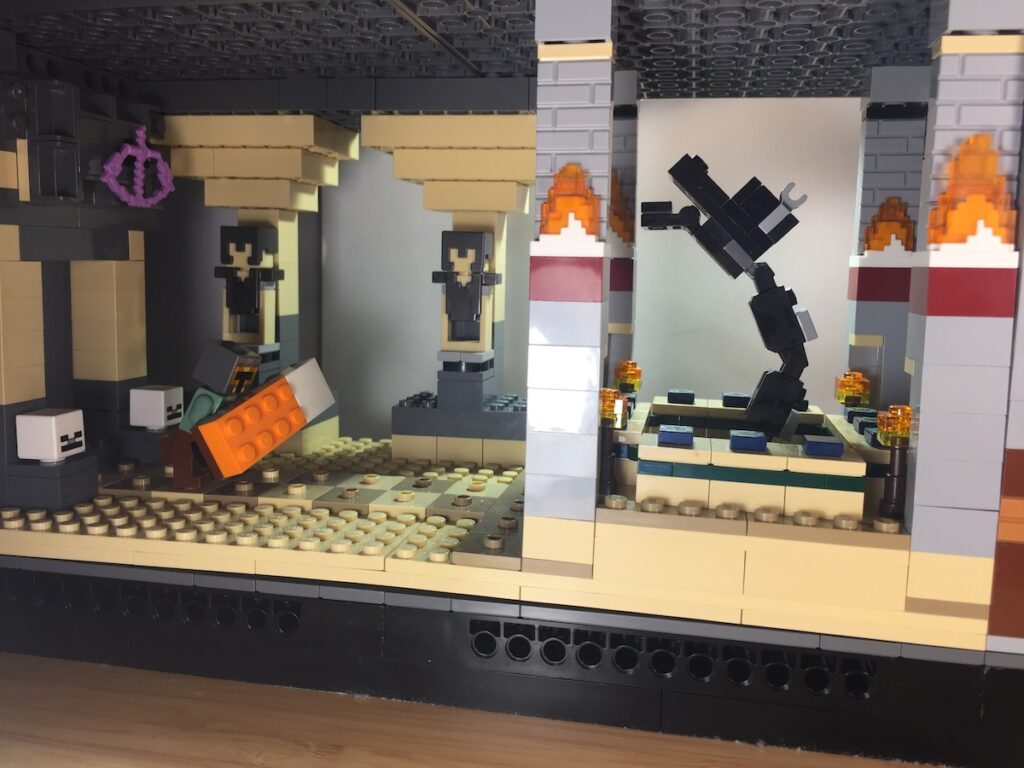
In The Dragon Emerges, I had the idea that the Ender Dragon has been killed and resurrected many times, and in its fury it has found a way into the Overworld to wreak vengeance. The stronghold room itself reflects this: it has been rebuilt with end stone.
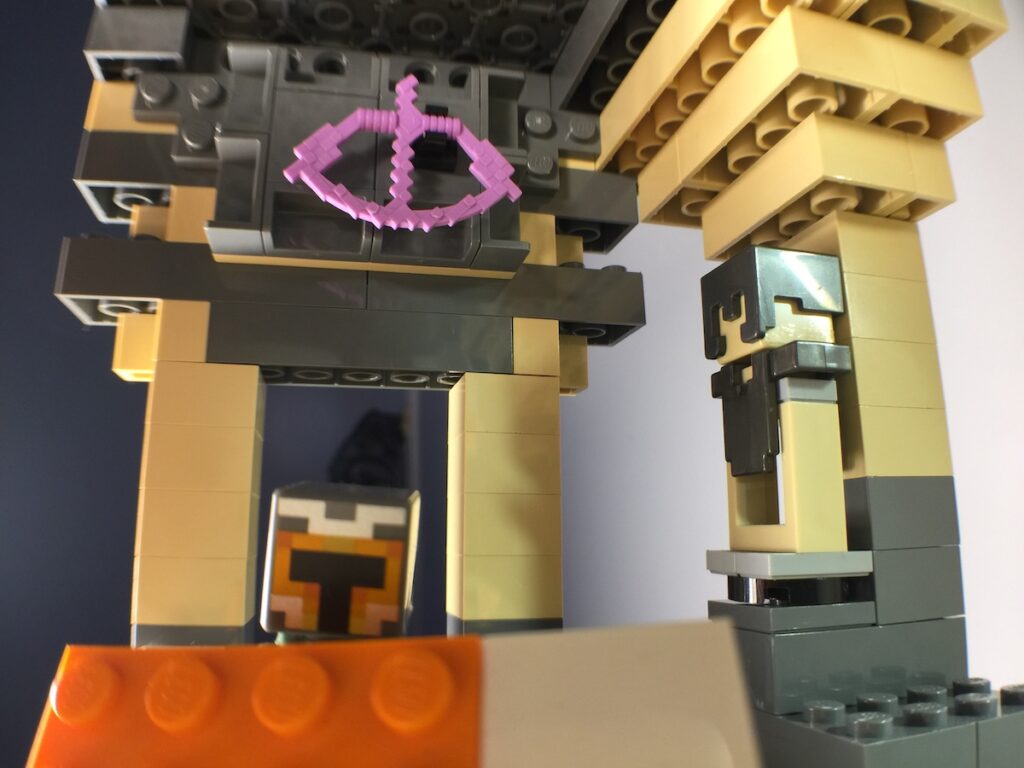
Netherite is common enough in this world to be used for display, and above the door hangs the legendary enchanted Dragonslayer bow that brought the Ender Dragon its first death.
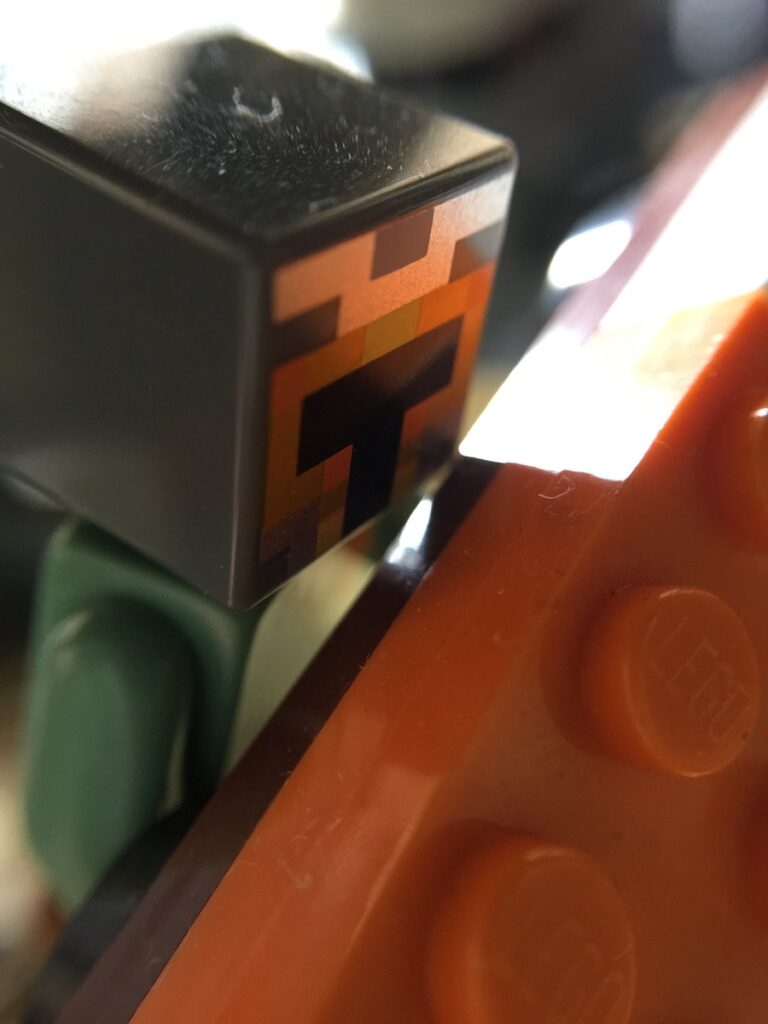
Only one player stands in the way of the dragon’s emergence into the Overworld. And she is armed with … a bed.
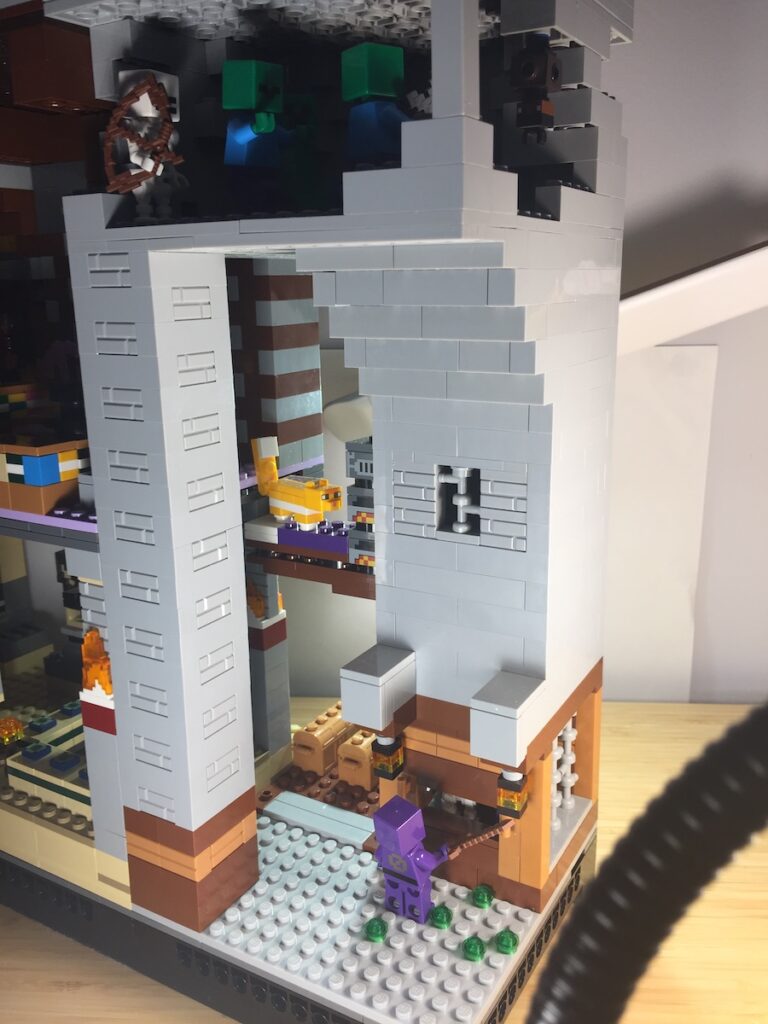
The Monster Farm is my second favourite build from the display. I love the steady patterning of the light grey bricks.
I was inspired by mob farms in the Minecraft game, which use natural monster spawning mechanics to channel mobs (and their loot) into a central location.
Let me show you how it works.
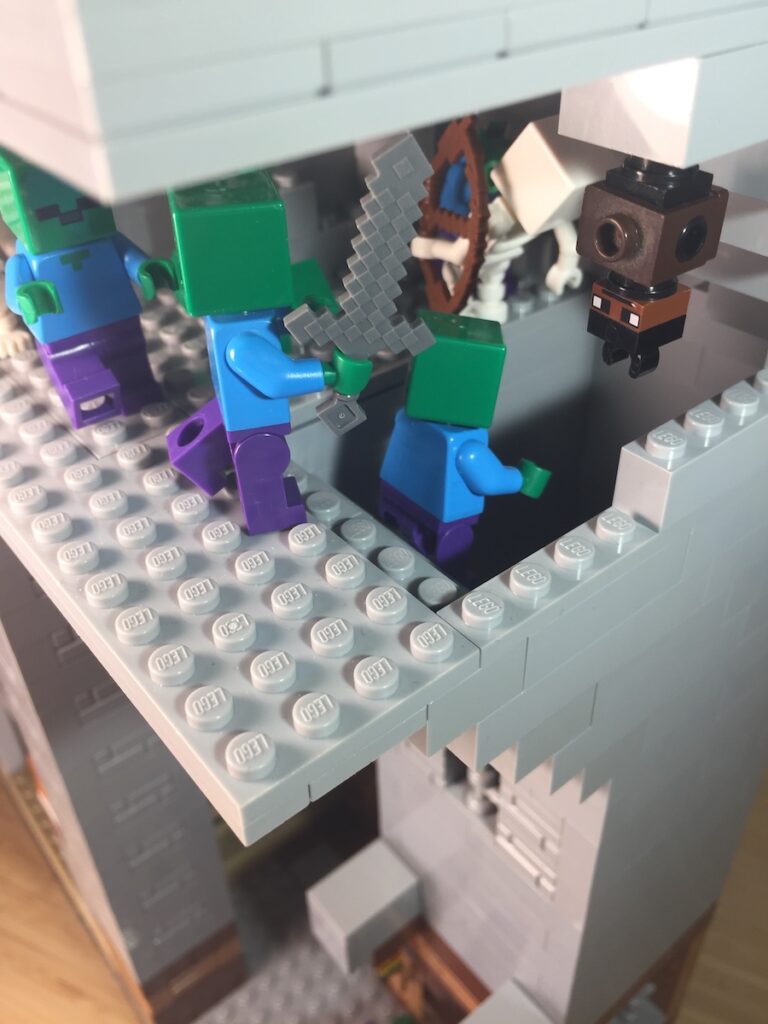
Monsters spawn in this darkened area at the top. When they fall down the hole, the fall damage reduces them to 1 heart.
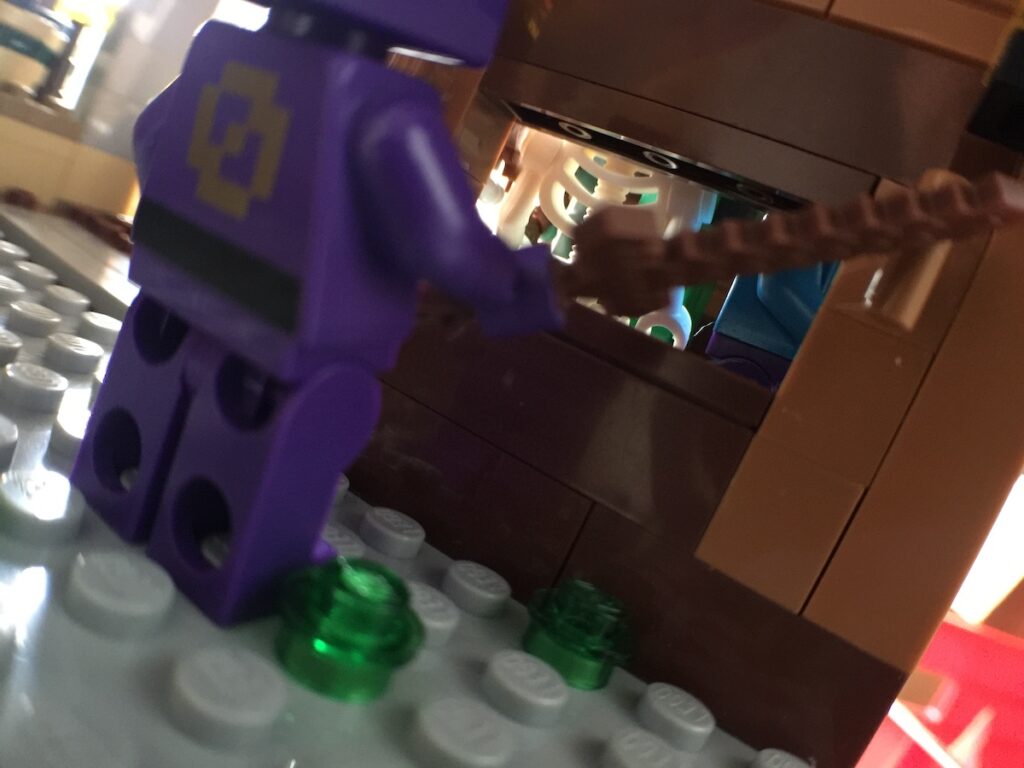
The player hits them through this slot at the bottom. The monsters can’t fight back because they can’t see the player. This allows the player to harvest experience points (XP) and other mob drops—in this case, rotten flesh, bones, bows, arrows and gunpowder, all of which have wider uses in the game.

A side view of the cage.
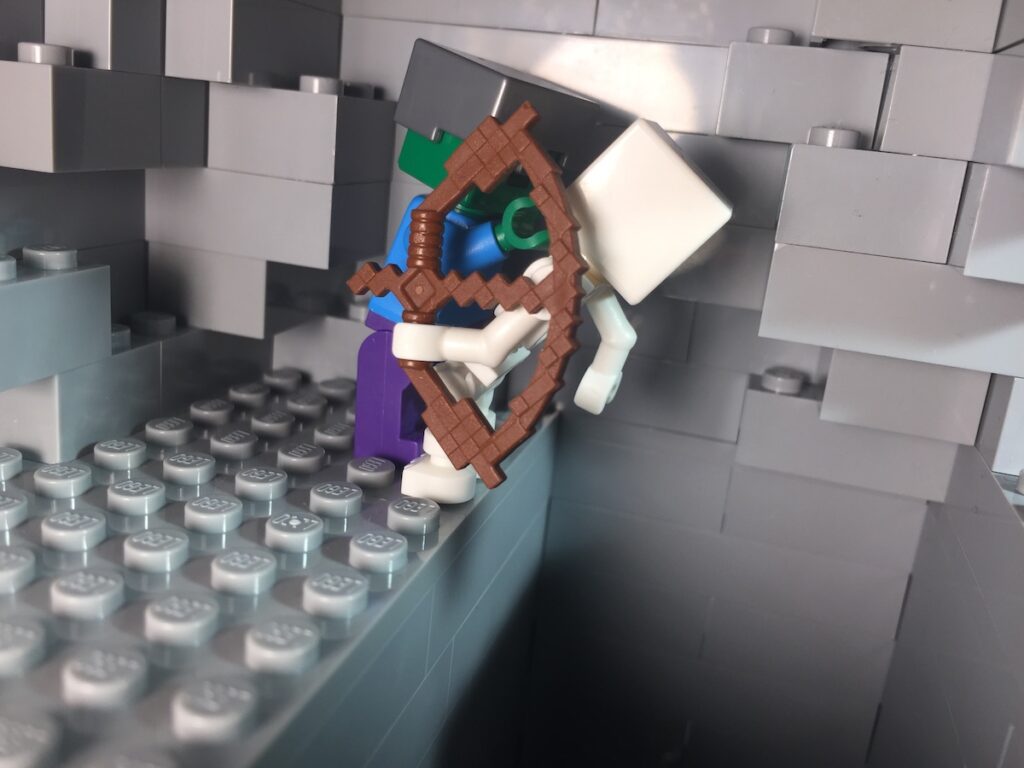
There is some … rivalry going on, perhaps, between zombies and skeletons?
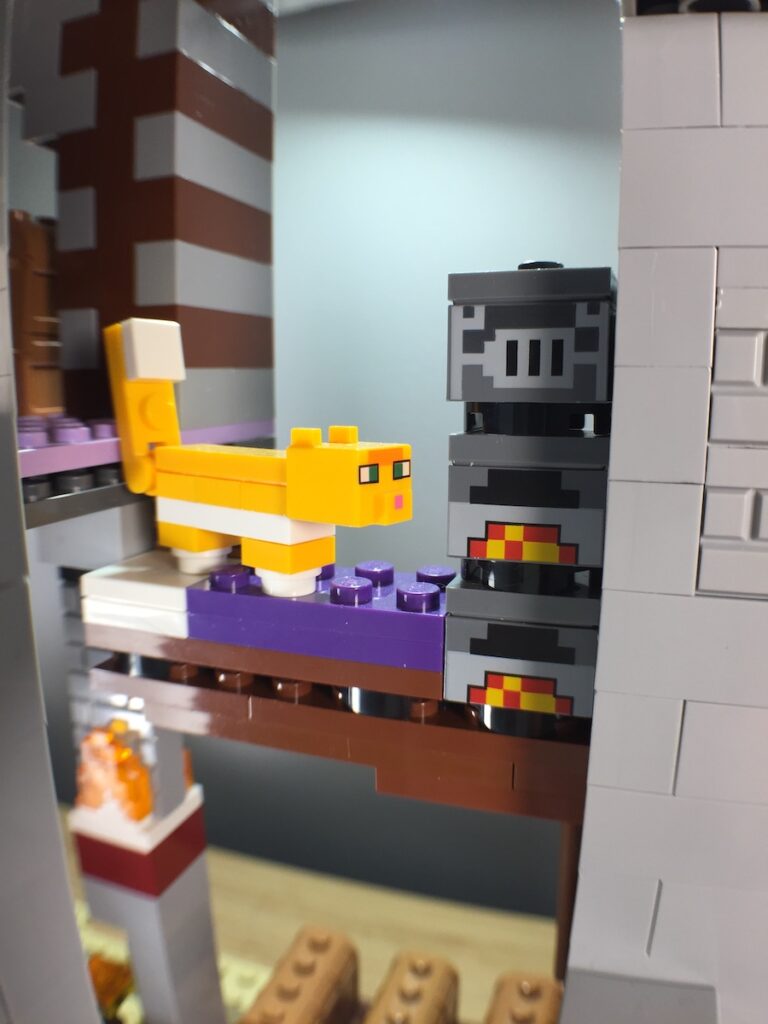
This part of the build is a reference to the things cats like in Minecraft: beds, chests and furnaces.
I love the yellow-and-purple contrast of the cat and the bed. It’s vivid and cheerful and yet it doesn’t take over the build.
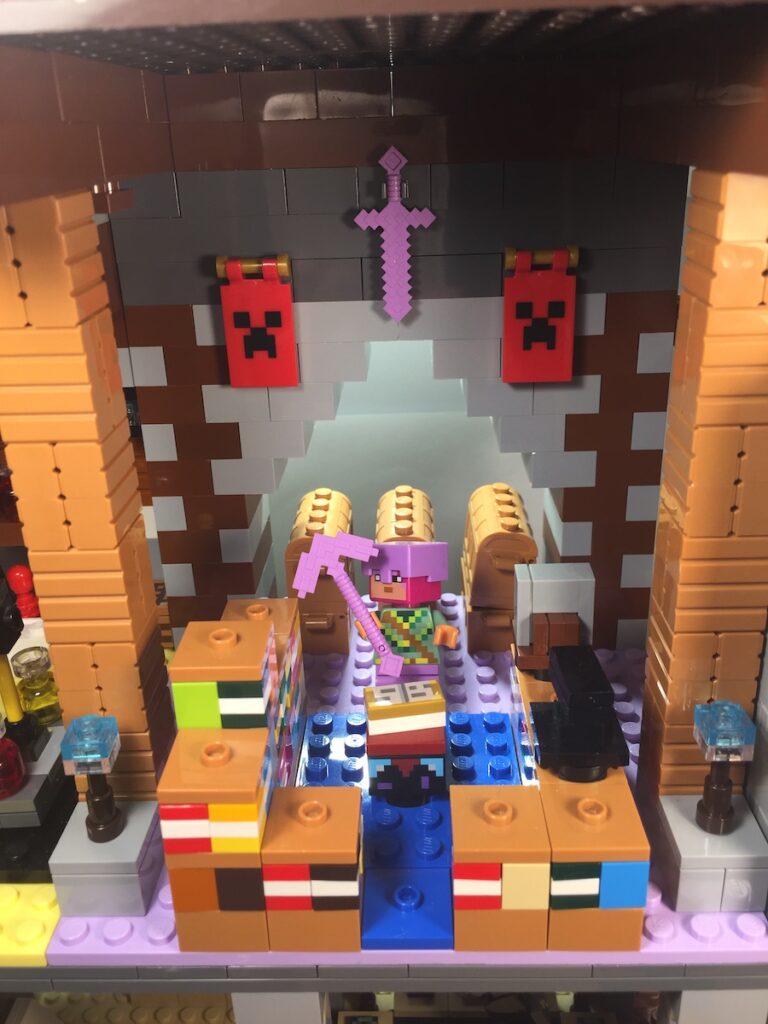
My favourite module—The Library! The floor is made from lapis lazuli and purpur. Oak planks, dark oak planks and stone bricks make up the walls and pillars. I love the texture and colour balance of this build, especially after choosing purple and blue for the floor. This module feels warm and inviting, and best of all, it is a library!
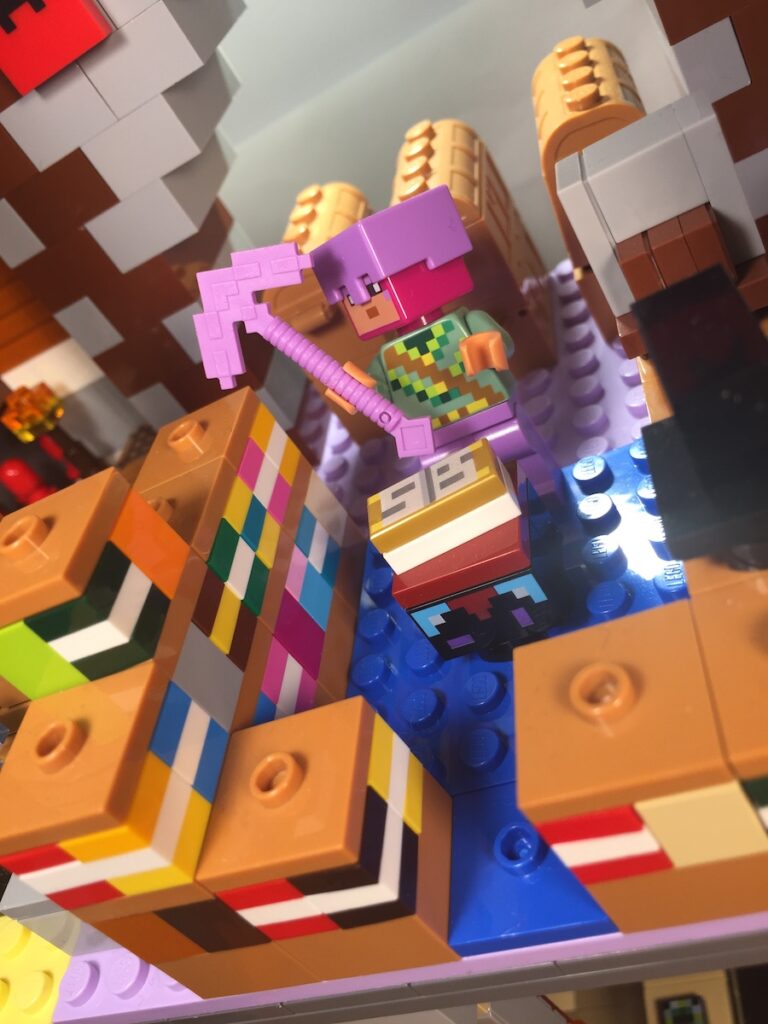
The Library is inspired by the enchanting mechanic in Minecraft. Books in all colours, shapes and sizes add power to the enchanting table. You need fifteen bookcases in the game to unlock the highest-level enchantments—the exact number in this build.
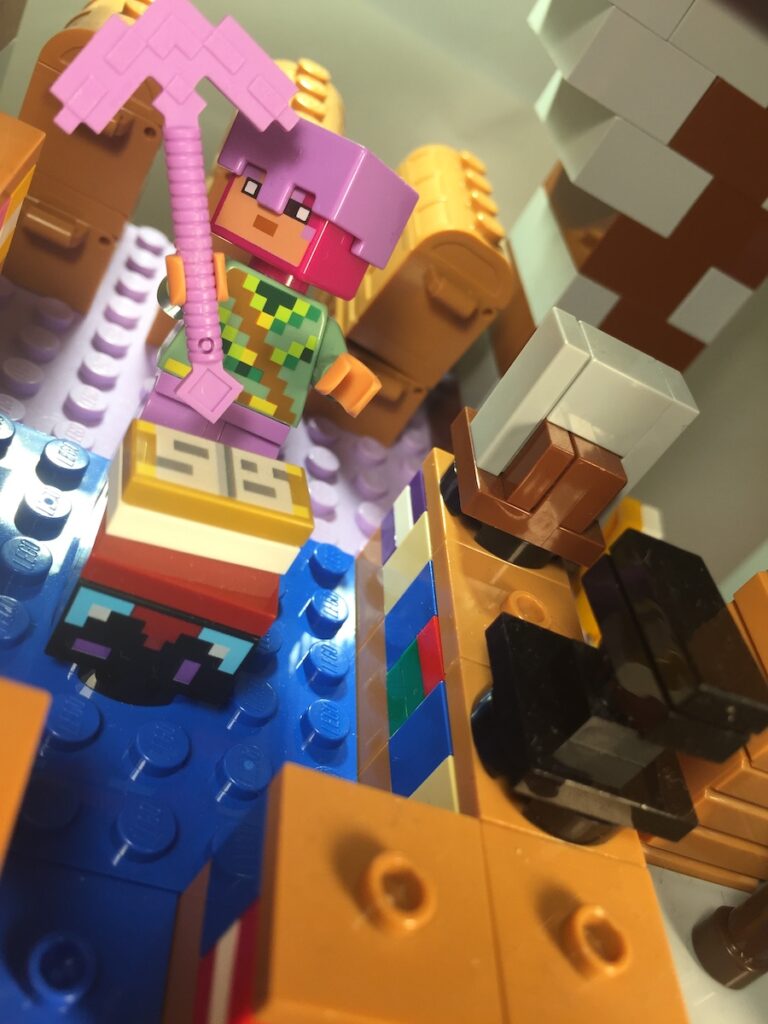
An anvil and grindstone allow the librarian to add, combine and remove enchantments from armour, weapons and tools. Those bookcases holding them up must be pretty strong!
Despite its central importance in the Minecraft game, the enchanting table is not easy to acquire in LEGO form. LEGO Minecraft has been running for 10 years with 119 sets … and the enchanting table appears in just one of those, 21131 The Ice Spikes, released in 2017.
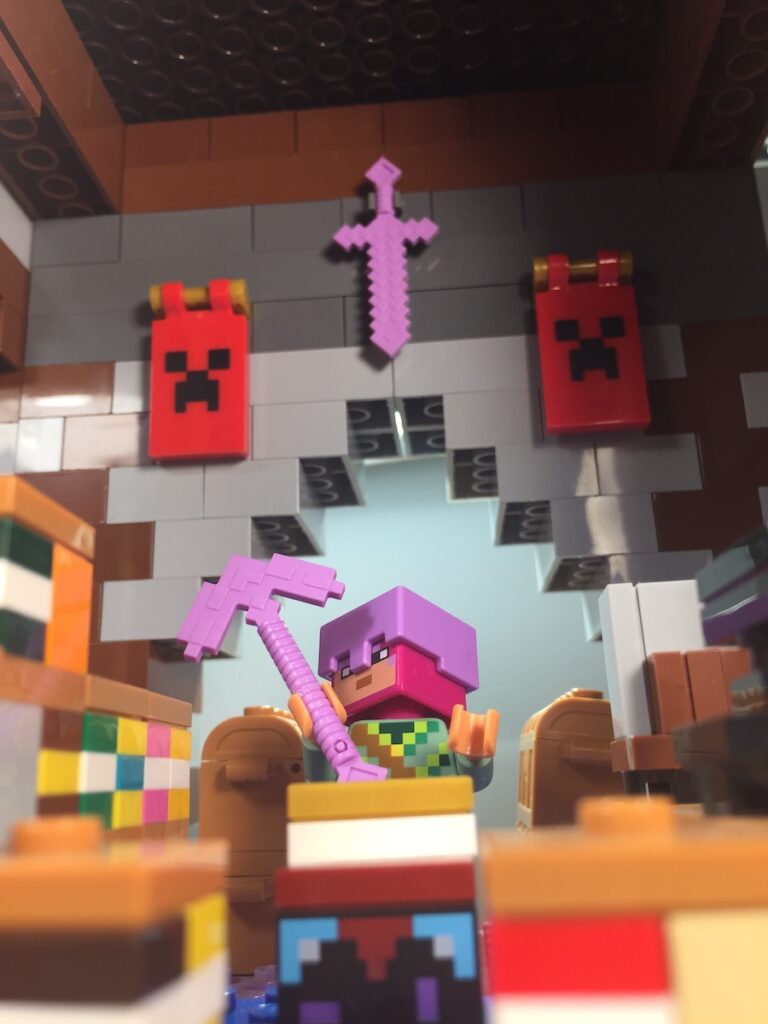
An enchanted blade hangs from the wall, awaiting its chosen wielder.
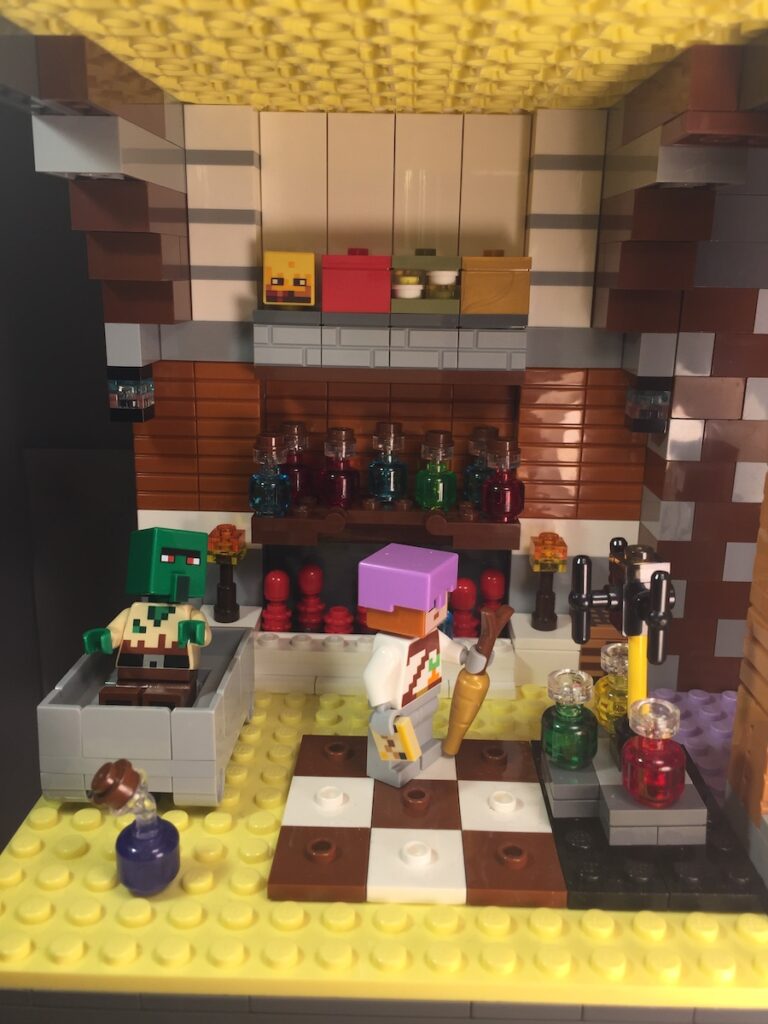
The Sanctum is my third favourite build. I love the texture of the wall and the colours I used, but the structure is quite a bit weaker than The Library and The Monster Farm. I had to repair it at least once during the show to make sure it didn’t collapse.
This entire module is dedicated to brewing potions. There are so many references to Minecraft brewing mechanics in the build—let me take you through them all!
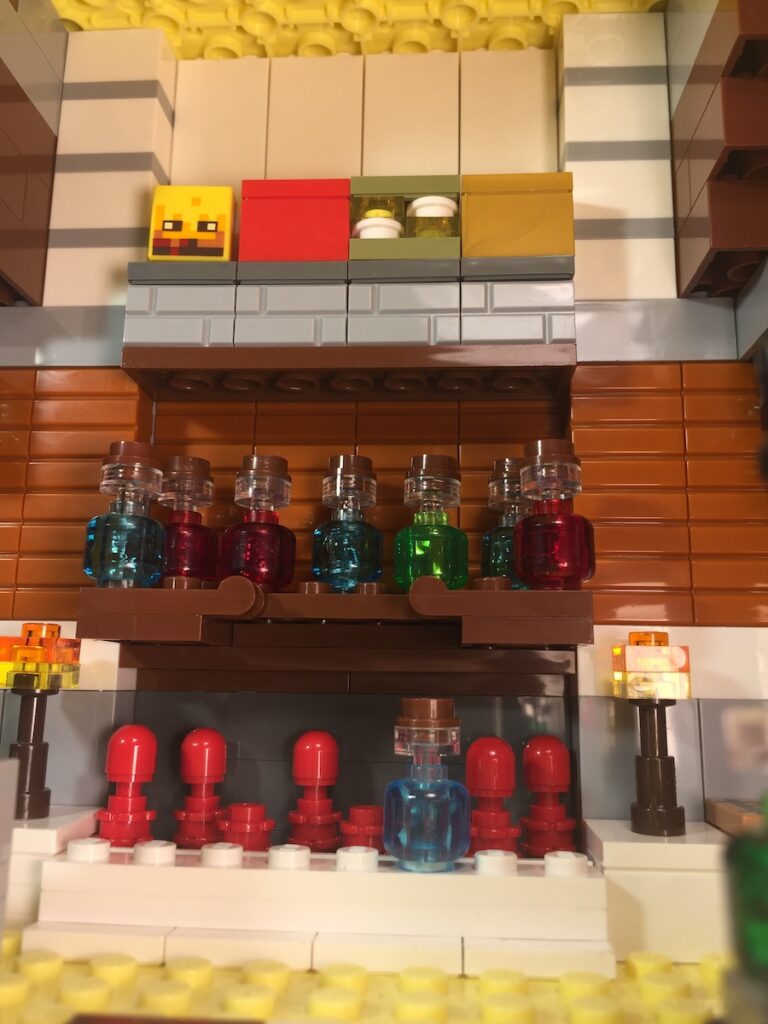
Nether wart, the base ingredient of nearly every potion in the game, grows in a garden bed of soul sand. The garden bed is made from white quartz blocks from the Nether.
Along the top are other key ingredients for brewing—redstone, glowstone and gold. Blazes do not drop their heads (unless you have a mod like More Mob Heads), but this is a reference to blaze powder—the fuel for brewing stands, as well as an ingredient in Potions of Strength.
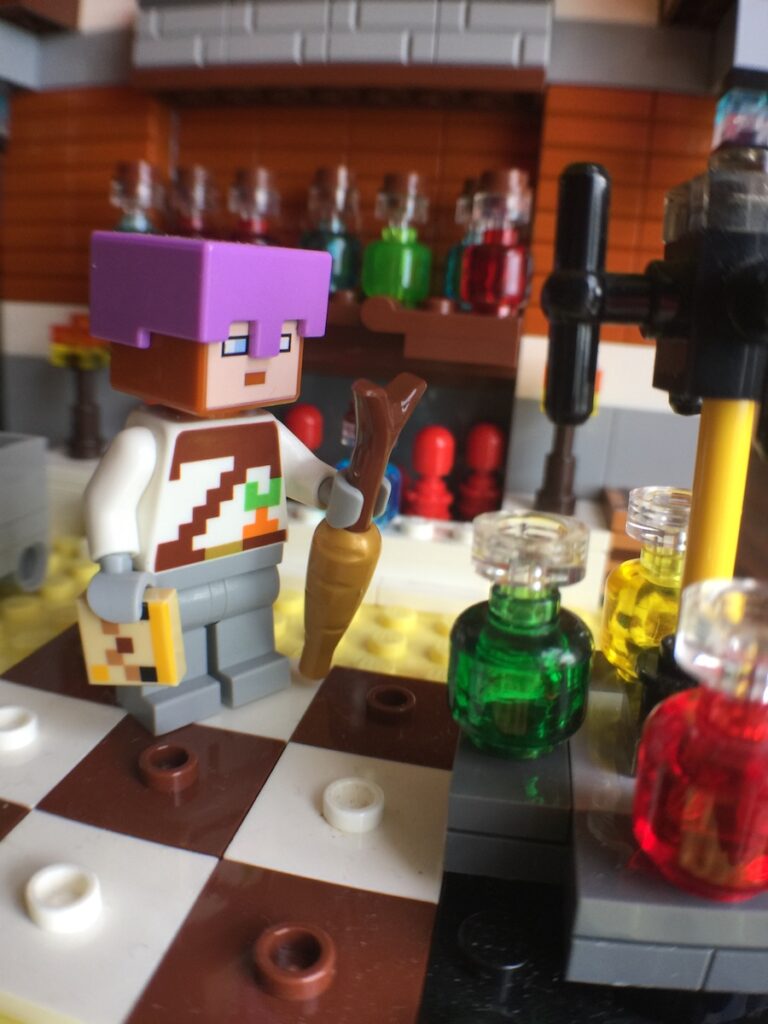
The apothecary is holding two brewing ingredients: a golden carrot for Potions of Night Vision (and Potions of Invisibility, if corrupted with a fermented spider eye), and a pufferfish for Potions of Water Breathing.
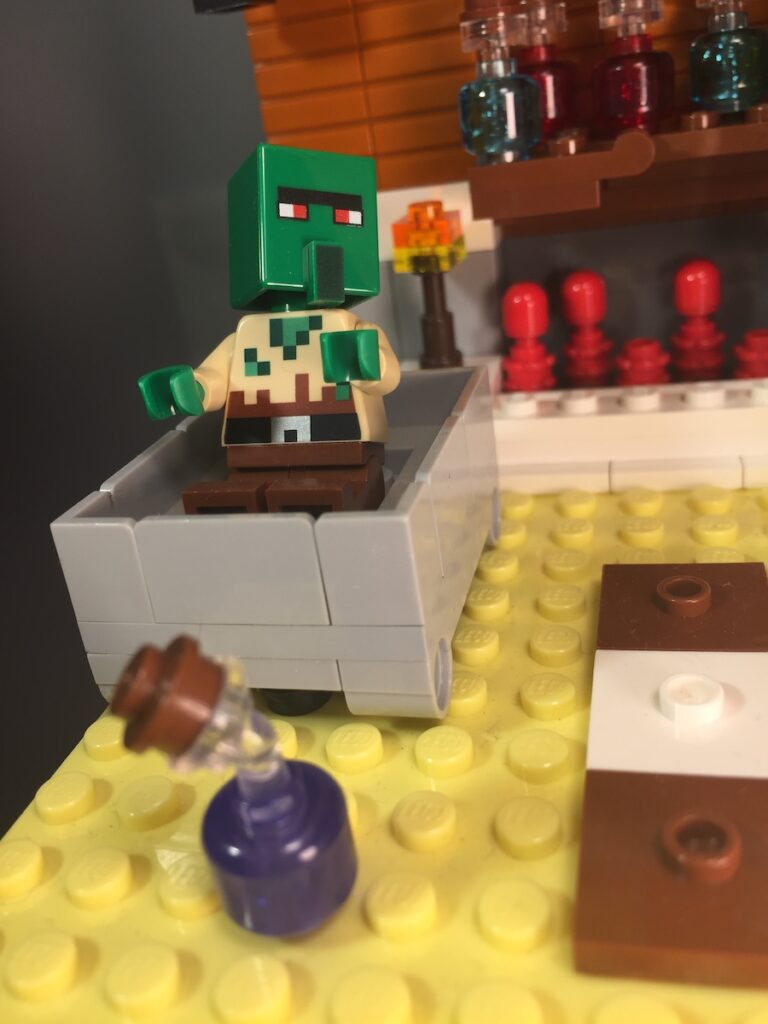
One of the potions I use the most in Minecraft is the Splash Potion of Weakness, the purple potion with the curved handle for throwing. A zombified villager must have the Weakness effect before you can heal them with a golden apple.
The minecart is another reference to Minecraft game logic. Mobs can’t get out of minecarts on their own, which makes them an effective tool for immobilising your patients. They also prevent hostile mobs from despawning even if you go far away.
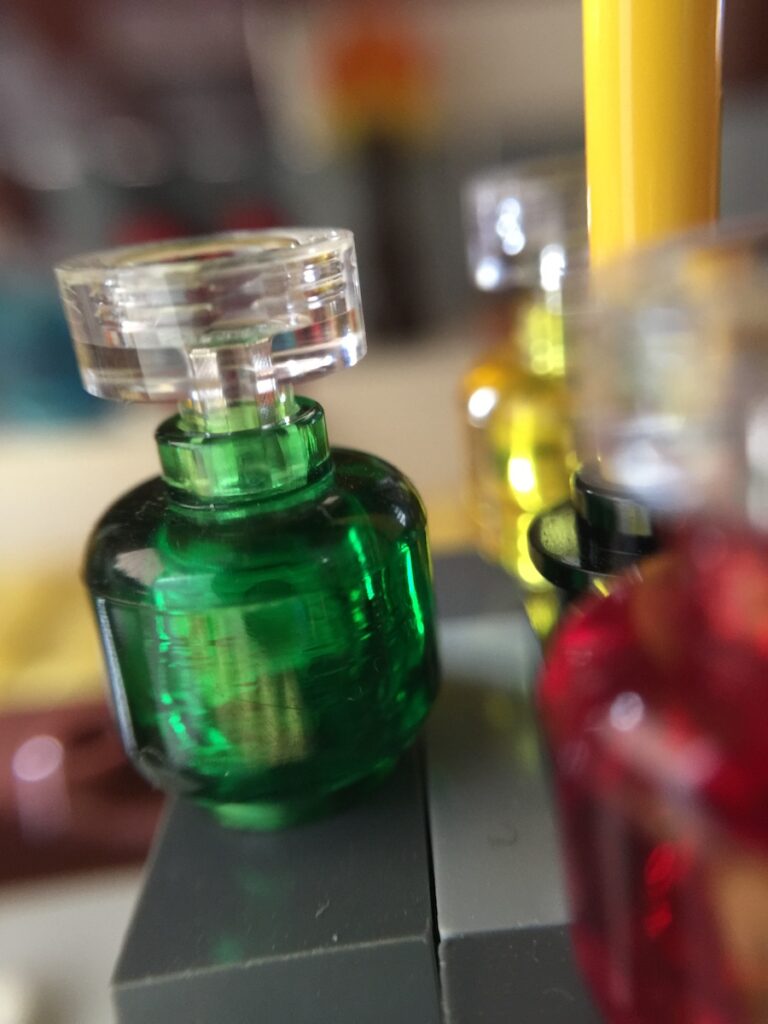
A Potion of Night Vision (Better Than Carrots™).
Thank you for reading 🙂
Now just one more post to go!
Matthew